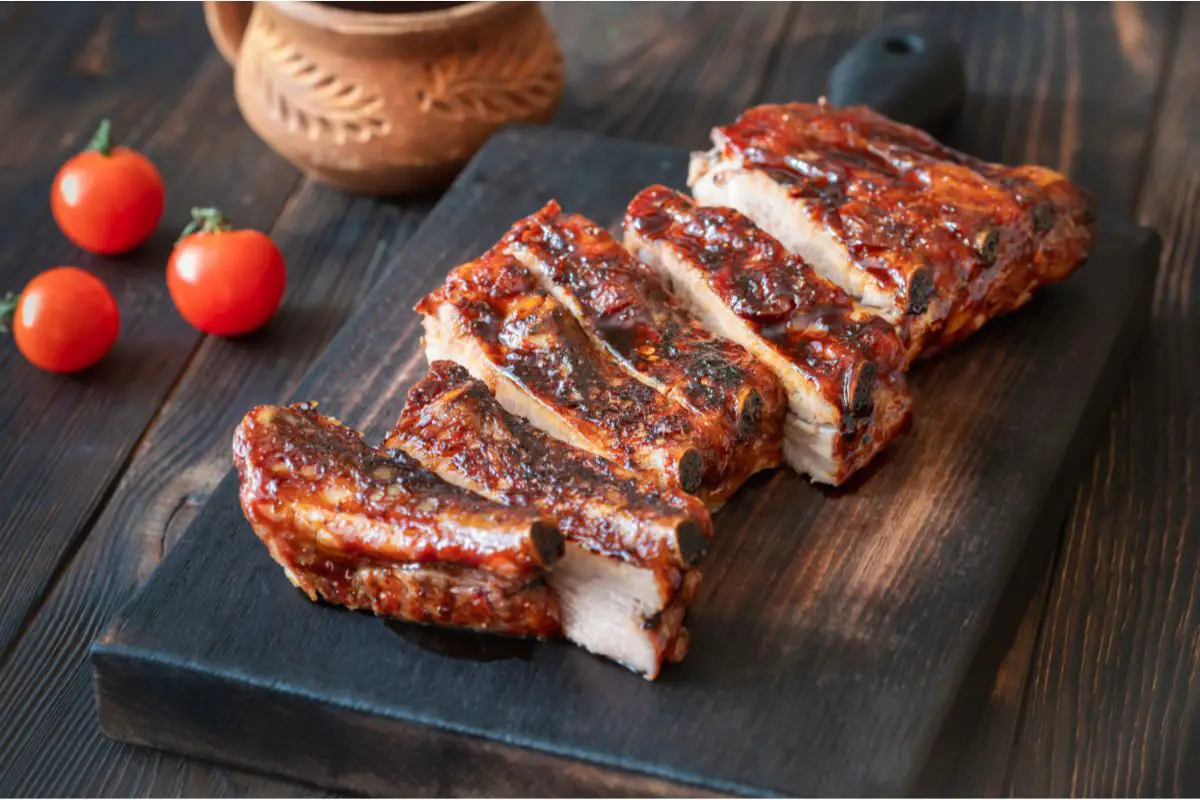Pork is a protein-filled meat-eater’s delight. When preserved and prepared correctly, it can transform the blandest of dishes into a culinary masterpiece.

Not only is it packed with protein, but it is filled with vitamins and minerals, including selenium, phosphorus, and thiamine.
Together, these help our body function healthily and compared to other red meats, such as lamb and beef, pork is arguably more beneficial to our health.
As with any type of meat, though, pork is perishable and can spoil when not preserved properly. Not many meats are better than well prepared pork but, there are not many worse than pork that has gone bad.
As you can probably guess, eating gone off pork can make you extremely sick. Therefore, you should always ensure it is still safe to eat before serving. The question remains – how can you tell if pork has gone bad?
In today’s post, we are going to answer this question. We will look at all the tell tale signs that pork is no longer suitable for consumption and the correct ways to store and cook it (See also “The Best Ways To Tell If Garlic Is Bad“).
Let’s get started.
Has Your Pork Gone Bad? Here’s How to Tell
There are numerous ways of checking whether pork has gone bad or not. Fortunately, it is pretty easy to find out. One way is to check the sell-by-date.
In most circumstances, pork will have around three to five days left from the sell-by-date before it begins to spoil. But, this is not always the case, so you should check its characteristics out to make sure, too.
Pork Appearance
One of the easiest ways to see if pork has gone bad is to simply inspect its appearance. Fresh pork meat should have a pink color. But, as it starts to spoil, it will turn into a grayish, dull hue with the pink quickly diminishing.
Yes, there may still be some pinkness inside the pork meat but if you notice any sort of dull discoloration or graying, you should discard the meat.
Another sign is when the fat marbling turns from its fresh, white color into an unwelcoming yellow.
These color changes apply to all types of pork, including pork chops and pork loins. Therefore, they are pretty good indicators that your pork has gone bad.
Pork Smell
Unsurprisingly, when pork starts to spoil, it will start to smell. Whilst you may not smell it from a distance, you should give the pork a good sniff when opening the packaging.
If it is fresh, it should have no odor. If you smell anything that is unpleasant or sour, like ammonia, then you should throw the pork out.
The Touch Test
When pork comes out of its packaging, it is quite normal for it to be a little soggy or wet. In fact, fresh pork should be firm but a little wet to touch, similar to a chicken breast.
When pork starts to spoil, however, it will feel slimy. It can also be mushy or dry. If its texture is anything like this, then the pork has probably gone bad. So, you know what to do – (altogether now) THROW IT OUT!
One bite and the meat will likely make you sick.
Cooked Pork

If you have cooked pork and want to find out if it has started to spoil, you can use the same methods as outlined above.
In general, cooked pork tends to last for around three to five days when stored in the refrigerator. Still, you should check its appearance, aroma, and texture before preparing for consumption.
If you find that it has started to smell unpleasant or you see any type of mold growing on its surface, then that pork is ready for the trash can.
Raw Pork
It is very easy to notice if raw pork has started to spoil. If it smells like ammonia, then it has gone bad. You can even sniff the packaging in store or ask the butcher to examine the meat closely before buying it to make sure it is fresh.
If the meat is pink or has a grayish-pink tone with no odor, then it is fresh and safe to consume. But, once you buy the pork, you need to get it home as quickly as you can.
Ensure it remains cold during transportation, especially if you are traveling a long distance to ensure it doesn’t spoil by the time you get home.
There is a danger zone when it comes to the temperature of pork and all meats for that matter. This is between 40 and 140 degrees Fahrenheit.
When meat is kept in this temperature zone, dangerous microorganisms and bacteria can start to develop on the meat and multiply. If this occurs, the meat is no good and will need to be thrown out.
Storing And Cooking Pork Correctly
The FDA (Food and Drug Administration) states that you should cook pork to an internal temperature of 145 degrees Fahrenheit or more.
There should also be a resting period of three minutes before being eaten. This is to avoid any problems that could arise from eating undercooked meat, such as trichinosis and salmonella poisoning.
The FDA also recommends that refrigerators should be maintained with a temperature of 40 degrees Fahrenheit or colder in order to avoid any contamination from bacteria whilst pork is stored.
As we mentioned earlier, pork can typically be stored in the refrigerator for approximately four days. You can choose to freeze it, however, if you do not intend to use it during this time.
Depending on the cut of pork, it can be frozen for between four and twelve months in general. For instance, pork chops can only be frozen for between four and six months, according to the FDA.
When storing pork, always make sure it is wrapped securely before being frozen. The packaging should have an airtight seal and you should write down the date you froze it for reference going forward.
Is Your Pork Done? Here’s How To Find Out
As the FDA states, pork is usually done when its interior temperature reaches 145 degrees Fahrenheit or more.
In some cases, pork is recommended to be cooked to an internal temperature of 155 degrees Fahrenheit, but this depends on the regulations of an establishment or country.
You can take the meat’s temperature using a meat thermometer. Simply insert this into the thickest portion of the meat, trying to avoid any bones.
If it hits a bone, it may give an incorrect temperature reading. When the thermometer reads 145 degrees Fahrenheit inside, it’s a safe sign that the pork is done and ready to enjoy!
In Summary
Pork is a healthy and delicious meat but only when preserved, stored, and prepared correctly. Bad pork can make you very sick if you consume it but luckily, it is pretty easy to tell whether it has spoiled or not.
So, things to remember:
- If it has a gray color (not pink), it has gone bad.
- If it smells unpleasant in any way, it has gone bad (it should have no aroma).
- If it feels slimy, dry, or mushy, it has gone bad.
If you find your cut of pork has spoiled, you know what to do – THROW IT AWAY.
- How To Make A Paleo Detox Smoothie: Berry Cherry Green Edition - April 18, 2023
- How To Make Spicy Paleo Paprika And Thyme Veggie Fries - April 18, 2023
- 15 Mouthwatering Keto Apple Recipes You Need To Try Today - April 18, 2023








![The Ultimate Healthy And Delicious [And Cheap] Breakfast Guide The Ultimate Healthy And Delicious [And Cheap] Breakfast Guide](https://gracefullplate.com/wp-content/uploads/2022/12/The-Ultimate-Healthy-And-Delicious-And-Cheap-Breakfast-Guide.jpg)
